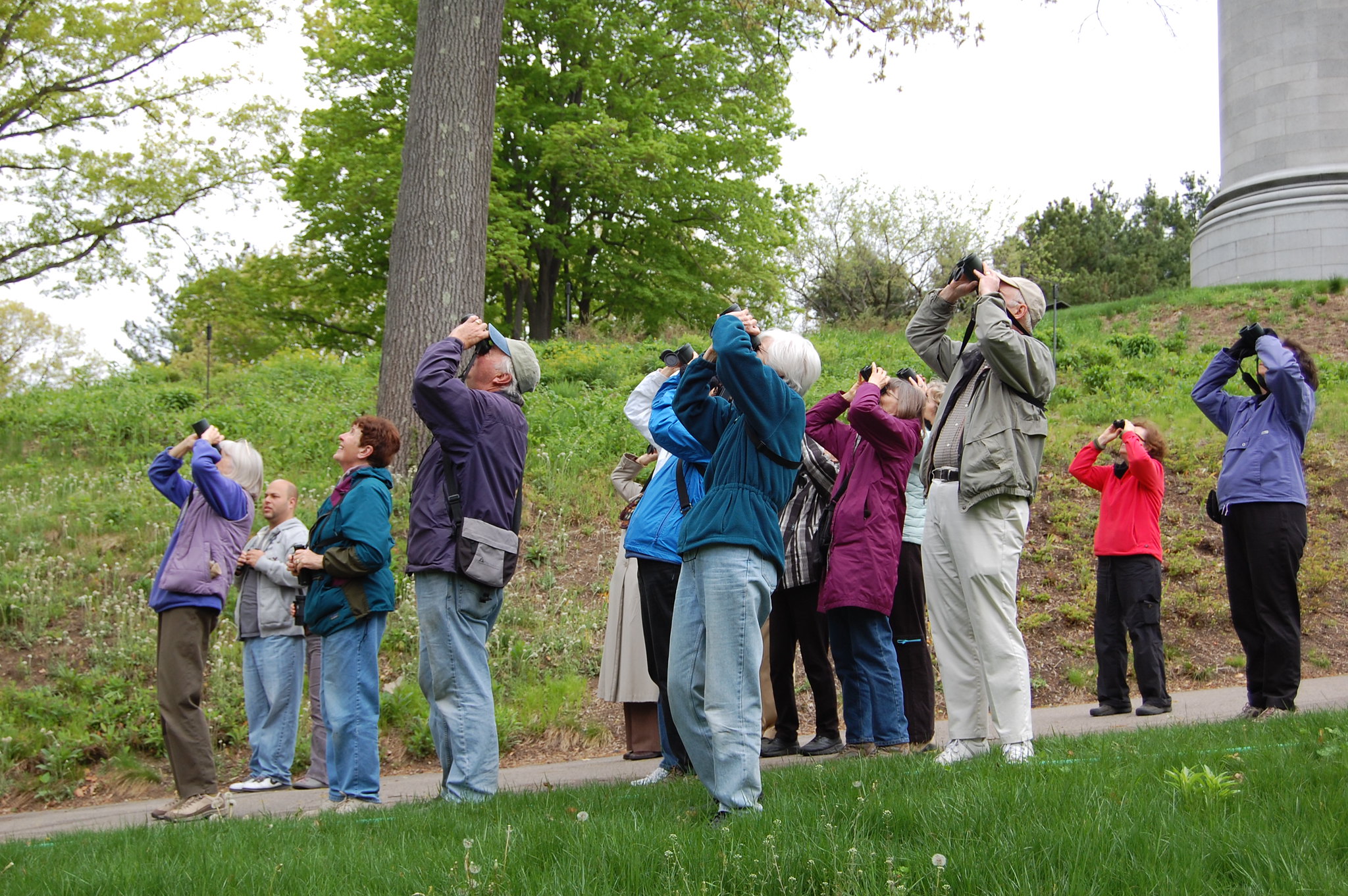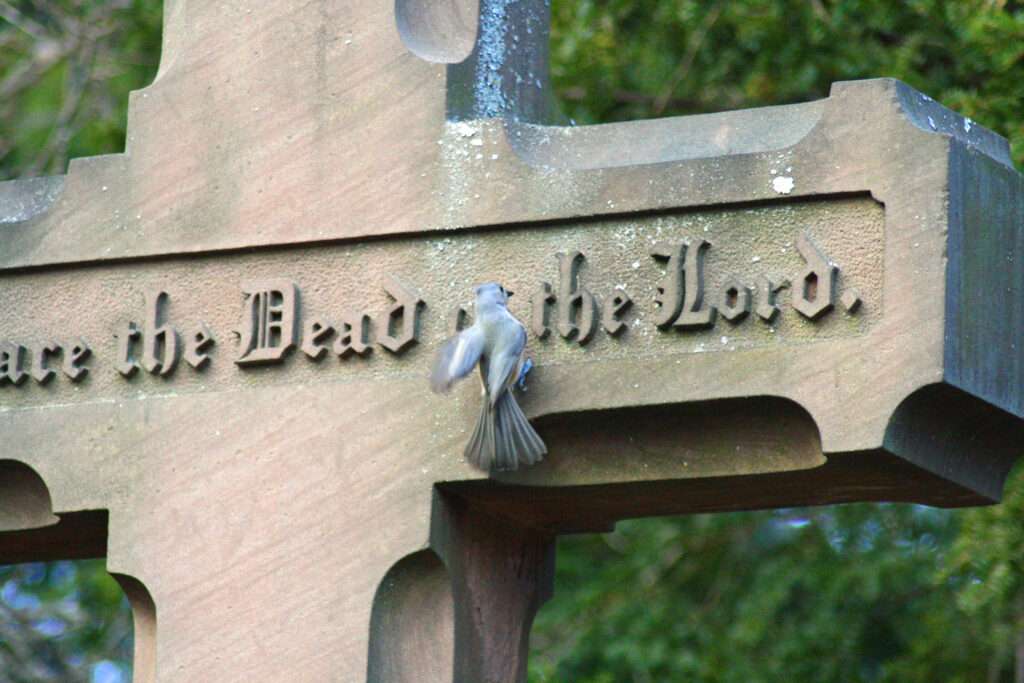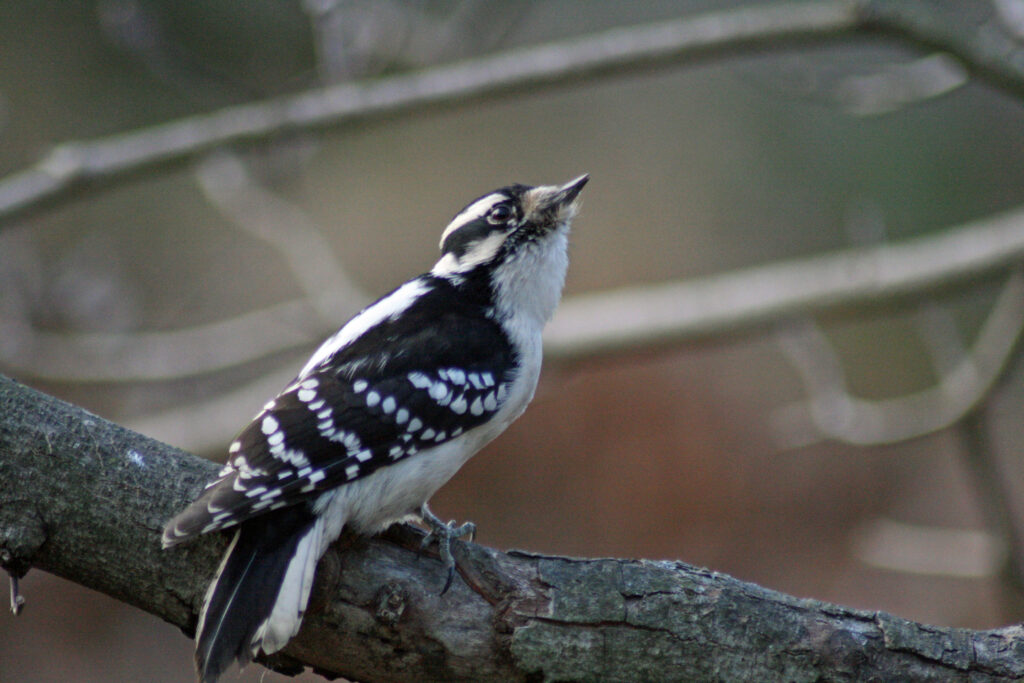Tips for Beginning Birders
Jessica Bussmann March 15, 2024 Plants & Wildlife

If you walk around Mount Auburn Cemetery, you will see plenty of birds–and where you see plenty of birds, you will see plenty of birders! Why do people take up birding? First of all, it’s a great way to get exercise and to free your mind from its everyday concerns. And it gives you a chance to experience the natural world on its own terms, even in a relatively urban setting, as you observe birds interacting with each other and the environment around them. Mount Auburn Cemetery, designated an Important Birding Area by the Massachusetts Audubon Society, provides the perfect place to begin your exploration of birding.

To start, all you really need is a pair of comfortable walking shoes. Binoculars are of course helpful for getting a closer look at birds up in a tree or tucked away into dense shrubbery, and if you become a regular birder you will want a pair eventually. But there are plenty of birds at Mount Auburn that can be easily observed without them. Some are easy to find–in early spring, the American Robins seem to outnumber the monuments, and if you look carefully at the edges of Auburn Lake or Willow Pond, you will often find a stately Great Blue Heron wading in the shallows. The best way to find birds is the same way you were taught to cross the street: stop, look and listen. Stop in an area where you think there could be birds, a stand of shrubs or a pond’s edge, perhaps. Look for birds, for signs of movement both on the ground and in the trees. And finally, perhaps most importantly, listen for birds. You may not see a bird on a tree branch at first, but if you can hear it singing or calling or cawing or chirping, you know it has to be nearby.

Many birders keep checklists of all the different species they have seen, sometimes even keeping multiple checklists for the different places where they go birding. There is definitely a feeling of accomplishment in being able to check off a bird, and an excitement in having seen something that is new to you. Yet time spent watching the behavior of a common bird like a robin is just as meaningful as time spent watching a more rare bird. Pay attention to what the robins or other easily seen birds are doing, and you will develop a sense of how birds interact with each other and the environment around them–how they look for food, how they communicate contentment, territoriality, or alarm, how they react when threatened, and how they proudly display their plumage and sing songs of courtship for one another. Every bird you watch will deepen your understanding of all birds, and all the birds you watch can provide wonderful insight into the natural world around you.
Regina Harrison, Sales Manager, is an avid bird-watcher and photographer.

Comments
Comments for this post are closed